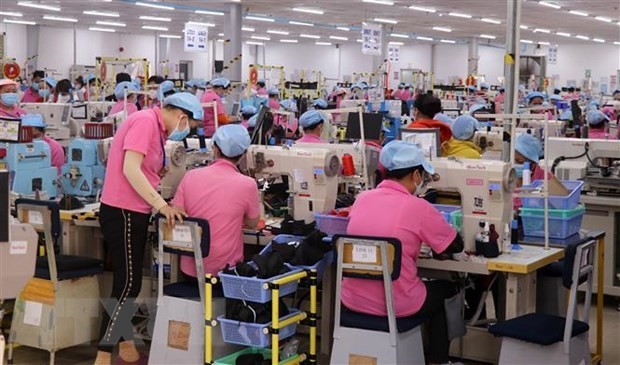
Viet Nam-Australia trade hits all time high in 2021
Latest
 |
| Employees work at shoe factory for exports at Vinh Hoa Hung Nam Industrial Zone in Kien Giang province’s Go Quao district. (Photo: VNA) |
Viet Nam's export turnover to Australia topped 4.45 billion USD, up 23 percent while its import was about 7.95 billion USD, a year-on-year rise of 70 percent.
With this trade volume, Viet Nam becomes Australia’s 12th biggest trading partner and Australia is Viet Nam's 10th biggest.
According to the Vietnam Trade Office in Australia, despite the negative impact of the COVID-19 pandemic, most of the exports to the Australian market have achieved impressive growth.
Export turnover of raw materials and fuels experienced from double-to triple-digit growth compared to the previous year. Such exports as textiles, garments, leather and footwear, machinery, equipment spare parts continued to increase remarkably, especially the textile and garment sector saw a growth rate of 42.23 percent.
The turnover of Viet Nam's key exports such as agricultural and fishery products also outperformed the previous year. Specifically, pepper surged by 41.98 percent, followed by rice, vegetable and fruits and seafood with 34.36 percent, 28.15 percent and 16 percent, respectively.
The prospect of trade between Viet Nam and Australia in 2022 is great as the two countries are now members of the Comprehensive and Progressive Agreement for Trans-Pacific Partnership (CPTPP) and the Regional Comprehensive Economic Partnership (RCEP) – an inclusive and open new-generation trade agreement. In addition, the two countries have completed the Enhanced Economic Engagement Strategy which sets out a roadmap to increase trade and investment opportunities, forging closer ties between the two countries.
Australia’s Ambassador to Viet Nam Robyn Mudie has said the two economies are highly complementary. Australia is a reliable supplier of the services and raw materials that Viet Nam’s exporters require, and Australian consumers enjoy Viet Nam’s high-quality products in their homes and workplaces. There is enormous potential to take this relationship even further as the two countries emerge from COVID-19.
The strategy will help guide the two countries towards an inclusive and sustainable growth path, she added.




















